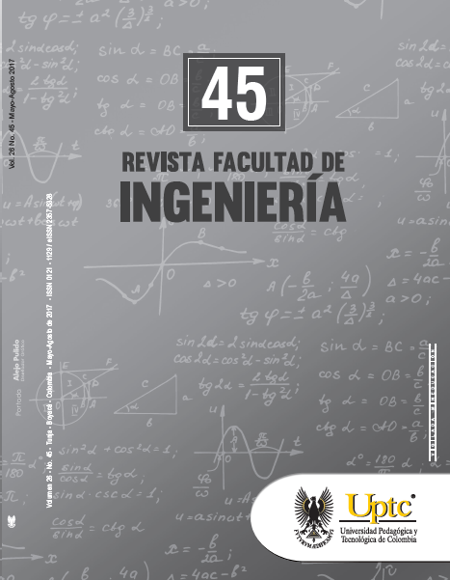Development of a platform for teaching basic programming using mobile robots

Abstract
Mobile robotics is being used in different education contexts, such as basic, middle, and high-level education. A literature review showed that 197 papers have been published in this area of knowledge over the past 10 years. Nowadays, Latin America faces a serious problem due to the low student enrollment in engineering programs, where, depending on the country, the ratio of graduate engineers can be 1 per 4500 to 1 per 10 000 people. In Colombia, the SPADIES program of the Ministry of Education affirms that the lack of motivation and interaction with real artifacts relating theory and practice is an important aspect for dropout. In this paper, a platform composed by a set of programmable mobile robots, and a WEB-responsive software tool for programming at different levels of knowledge was implemented. The set of mobile robots included sensors such as proximity, trajectory, light, inertial, and vision; also, communication and user interaction tools, such as Bluetooth and colored LEDs-ring, and a mechanical support for an erasable marker were included. The WEB-responsive tool supports graphical programming for novice; Python programming, for middle; and ANSI-C, for advanced learners. This platform consolidates a hands-on tool to introduce students to STEM concepts. Results are reported in the context of platform functionality, using all three programming environments, and beta tests with real users.
Keywords
Engineer education, Mobile robotics, WEB-responsive
References
- F. B. V. Benitti, “Exploring the educational potential of robotics in schools: A systematic review,” Comput. Educ., vol. 58 (3), pp. 978-988, Apr. 2012. DOI: http://doi.org/10.1016/j.compedu.2011.10.006. DOI: https://doi.org/10.1016/j.compedu.2011.10.006
- M. E. Argentina, “Plan Estrategico de Ingenierìa 2012-2016,” Ministerio de Educación - Argentina, 2014. Available: http://pefi.siu.edu.ar/. [Accessed: 13-Feb-2014].
- M. de Educación, “SPADIES - Ministerio de Educación Nacional de Colombia,” 2014. Available: http://www.mineducacion.gov.co/1621/w3-article-156292.html. [Accessed: 13-Feb-2014].
- P. De Cristóforis, A. Member, S. Pedre, S. Member, M. Nitsche, T. Fischer, F. Pessacg, and C. Di Pietro, “A Behavior-Based Approach for Educational Robotics Activities,” vol. 56 (1), pp. 61–66, 2013. DOI: https://doi.org/10.1109/TE.2012.2220359
- L. Major, T. Kyriacou, and O. P. Brereton, “Systematic literature review: teaching novices programming using robots,” in 15th Annu. Conf. Eval. Assess. Softw. Eng. (EASE 2011), pp. 21-30, 2011. DOI: http://doi.org/10.1049/ic.2011.0003. DOI: https://doi.org/10.1049/ic.2011.0003
- E. Milena, J. Jojoa, E. C. Bravo, E. Bladimir, and B. Cortés, “Tool for Experimenting With Concepts of Mobile Robotics as Applied to Children ’ s Education,” vol. 53 (1), pp. 88-95, 2010. DOI: https://doi.org/10.1109/TE.2009.2024689
- C. K-Team, “K-Team Corporation, Mobile Robotics,” 2016. Available: http://www.k-team.com/. [Accessed: 01-Jan-2016].
- HandyBoard, “Cricket Logo,” 2009. Available: http://handyboard.com/cricket/. [Accessed: 01-Jan-2016].
- A. MobileRobots, “Pioneer Robots,” 2013. Available: http://www.mobilerobots.com/ResearchRobots/. [Accessed: 01-Jan-2014].
- W. Robotics, “Pekee Robot,” 2009. Available: http://www.wanyrobotics.com/robots.html. [Accessed: 01-Jan-2014].
- Ir. Corporation, “iCreate Robot,” 2013. Available: http://www.irobot.com/us/learn/Educators/Create.aspx. [Accessed: 01-Jan-2014].
- A. Corporation, “Pob-Bot Robot,” 2013. Available: http://education.awabot.com/. [Accessed: 01-Jan-2014].
- Arduino, “Arduino Robot,” Arduino, 2013. Available: http://arduino.cc/en/Main/Robot. [Accessed: 01-Jan-2014].
- Aseba, “Thymio II Robot,” Aseba, 2013. Available: http://aseba.wikidot.com/en:thymio. [Accessed: 01-Jan-2014].
- BirdBrain-Technologies, “The Finch Robot,” 2016. Available: http://www.finchrobot.com/. [Accessed: 01-Jan-2016].
- Pololu-Corporation, “Pololu M3Pi Robot,” 2016. Available: http://www.pololu.com/product/2151. [Accessed: 01-Jan-2016].
- Meet-Edison, “Meet Edison - Cheap Programable Lego,” 2016. Available: http://meetedison.com/. [Accessed: 01-Jan-2016].
- Parallax, “Scribbler Robot,” 2014. Available: http://www.parallax.com/product/28136. [Accessed: 01-Jan-2014].
- F. Gómez, F. Muñoz, B. E. Florián, C. A. Giraldo, and E. B. Bacca-Cortes, “Diseño y prueba de un robot móvil con tres niveles de complejidad para la experimentación en robótica Design and testing of a mobile robot with three levels of complexity for robotics experimentation,” Ing. y Compet., vol. 74 (2), pp. 53-74, 2008. DOI: https://doi.org/10.25100/iyc.v10i2.2474
- C. Giraldo, B. Florian, B. Bacca, F. Gómez, and F. Muñoz, “A programming environment having three levels of complexity for mobile robotics,” Ing. e Investig., vol. 32 (3), pp. 76-82, 2012.
- Code.org, “CODE - Anybody can learn,” 2016. Available: http://code.org/. [Accessed: 01-Jan-2016].
- MIT, “MIT App Inventor,” 2016. Available: http://appinventor.mit.edu/explore/about-us.html. [Accessed: 01-Jan-2016].
- R. Barry, “FreeRTOS - Market leading RTOS,” 2016. Available: http://www.freertos.org/. [Accessed: 01-Jan-2016].
- DJango-Software-Foundation, “The Web Framework for Perfectionists with Deadlines - DJango,” 2016. Available: http://www.djangoproject.com/. [Accessed: 01-Jan-2016].
- J. Shore, and S. Warden, The Art of Agile Development. Sebastopol, CA: O’Reilly Media, 2008.
- R. C. Arkin, Behavior-Based Robotics (Intelligent Robotics and Autonomous Agents), Third. A Bradford Book, 1998.
- E. C. for the D. of V. T. (CEDEFOP), “Skills for Green Jobs (European Synthesis Report),” 2010.